Introduction to the Endpoint in Math
An endpoint in math is a point that marks the end of a line segment or a ray. It refers to either of the two points that limit the line segment on both sides. An endpoint is important because it tells you where the line segment stops. It cannot go beyond that point!
Endpoint in Math: Definition
The endpoint can be defined as the point on a graph or a figure where the figure ends. It can be the one end of a ray, two extreme points of a line segment, a point connecting sides of a polygon (the vertices) or the common endpoint of two rays forming an angle.
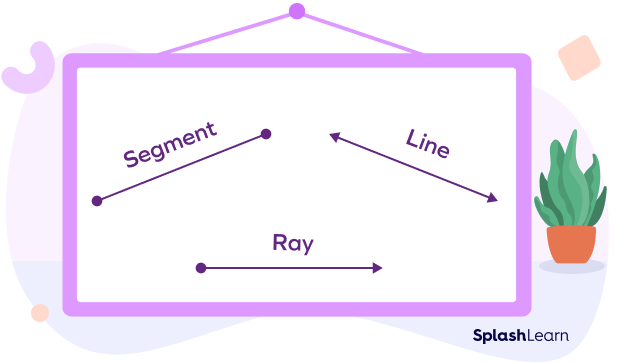
Before we can understand what an endpoint in math is, let us first refresh some related math concepts.
What Is a Line Segment?
A line segment is a section of a line that connects two points. A line is limitless and extends infinitely in both directions. However, a line segment is limited on both ends by two points.
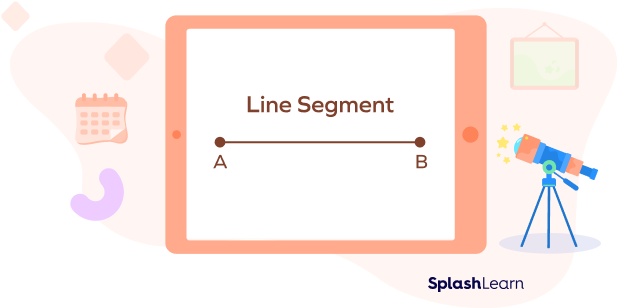
What Is a Ray?
Unlike a line segment, a ray is limited at one end by a point, while the other end extends infinitely. So, which is the endpoint of ray? Take a look at the ray PQ. Here, P is the endpoint.
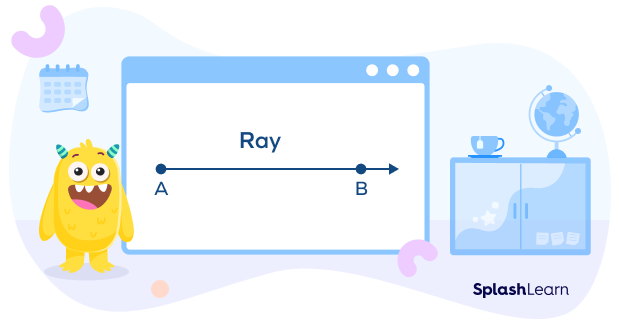
What Is an Endpoint in Geometry?
An endpoint is defined as a point at which a line segment or a ray ends. In general, an endpoint is the furthermost or the ending point.
Examples:
In a line segment, endpoints are the points at which the line segment ends. A line segment has two endpoints.

A ray has one endpoint.
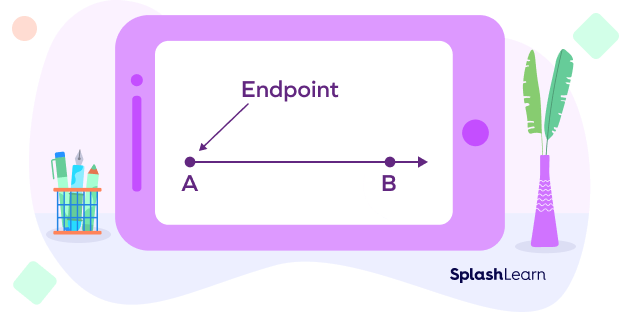
In an angle, the common point between the two rays (vertex) is an endpoint.
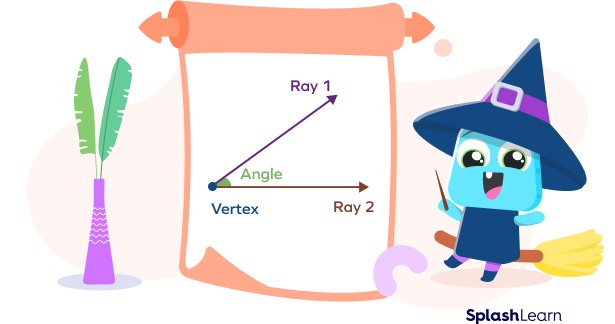
A polygon is formed using three or more line segments. Each side intersects two other sides, at an endpoint. In polygons, the points that join the sides are endpoints.
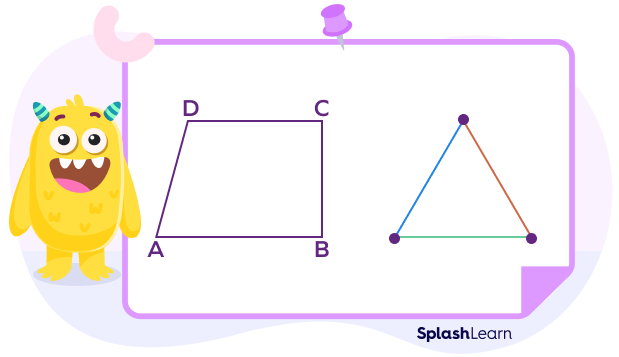
Finding the Length of a Line Segment Using the Endpoints
Endpoints in math help us measure the length of a line segment. Consider a line segment AB.
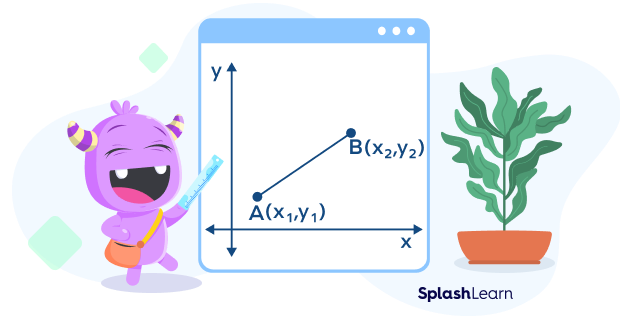
We can use the coordinates of the endpoints A and B to determine the length of AB.
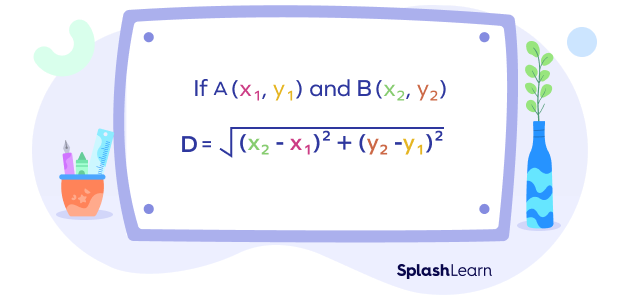
Bisecting a Line Segment Using Endpoints
To bisect a line segment means to cut the line at the center to divide it into two equal parts.
When you bisect a line segment, you split it at the “midpoint.” The two new line segments you get now have a new endpoint on one side (the side toward the original midpoint).
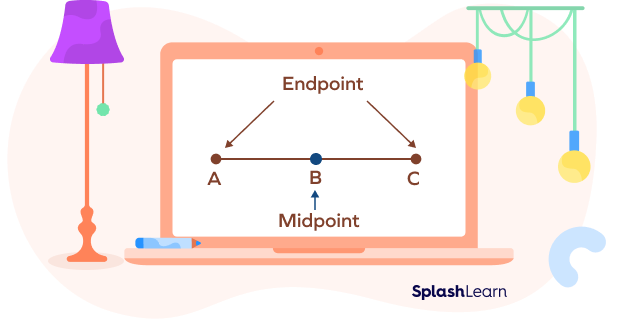
We can find the coordinates of the midpoint using the coordinates of the endpoints as follows:
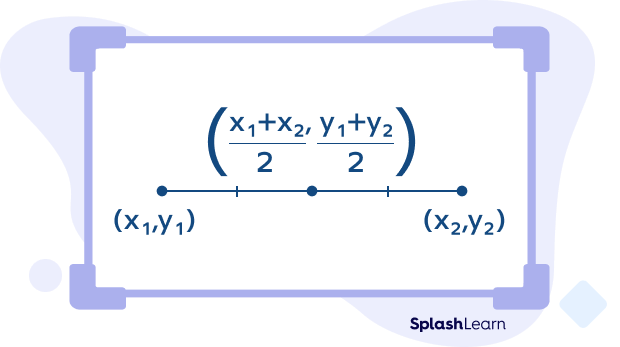
How to Find the Endpoint of a Line Segment?
If we know one endpoint and the midpoint of the line segment, we can find the other endpoint of a line segment. To find the missing endpoint using the coordinates of the midpoint and the other endpoint, we find the distance from the known endpoint to the midpoint. Then, we measure that same distance from the midpoint in the other direction to find the other endpoint.
The Formula to Find the Endpoint: Endpoint Formula
Let’s learn the formula to find a missing endpoint.
Let M (xm, ym) be the midpoint of the line segment joining two endpoints A (x1, y1) and B (x2, y2).
We can use the midpoint formula to find either of the endpoints. Given the coordinates of M (the midpoint) and A (the endpoint), the coordinates of B can be calculated using the following formula:
$x_{m} = \frac{x_{1}+ x_{2}}{2}$
$y_{m} = \frac{y_{1}+ y_{2}}{2}$
Here, adjusting the terms on LHS and RHS, we get
$x_{1} = 2x_{m} – x_{2}$
$x_{2} = 2x_{m} – x_{1}$
$y_{1} = 2y_{m} – y_{2}$
$y_{2} = 2y_{m} – y_{1}$
How Do We Name Objects Using the Endpoints?
Endpoints help us name objects in geometry, such as line segments, angles, polygons, etc.
A line segment is named by its two endpoints. In the line segment below, points A and B are its two endpoints. The line segment is named after its endpoints, so we name it AB or BA. We write it symbolically as $\overline{AB} \text{or} \overline{BA}$.
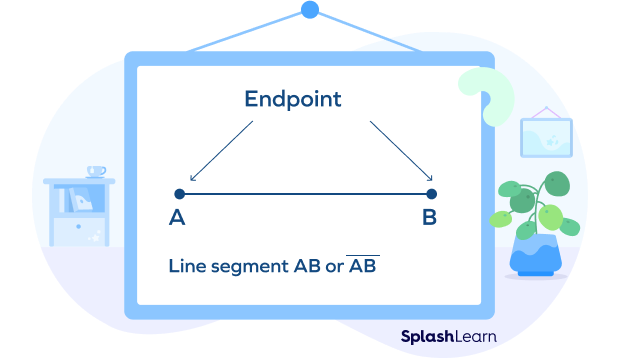
A ray has one endpoint. It is named with its endpoint being the first letter.
In the ray below, A is the point that is the endpoint of the ray. So the ray is named $AB$.
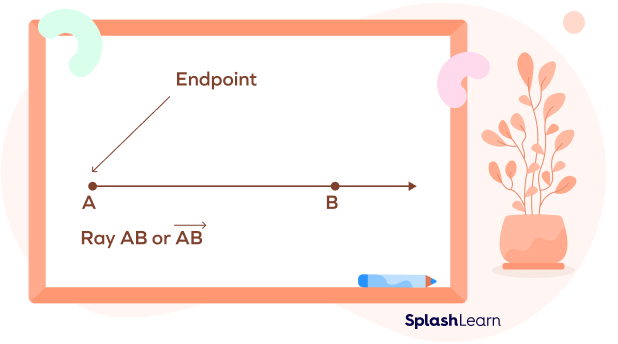
An angle is made up of two rays that meet at a common endpoint. The angle can be named based on the common endpoint.
In the angle below, the rays are BA and BC. They share a common endpoint, which is B. The angle can be named by its common endpoint as $\angle \text{B}$. It can also be named based on the two rays as $\angle \text{ABC}$.

A polygon is formed by three or more line segments that join at endpoints called vertices.
For example, in a polygon with four sides, AB, BC, CD, and AD are the sides. We can name a polygon by listing the endpoints as ABCD.

Conclusion
An endpoint in math is important because it delimits a line and tells us where a line segment starts and stops. It helps us find the length of a line segment and name the different types of lines and objects, such as line segments, rays, angles, and polygons. Remember, to find an endpoint, you need the midpoint and the other endpoint!
Solved Examples
1. How many endpoints does a ray have? Identify the endpoints of the given ray.

Solution:
A ray has one endpoint, and it extends infinitely in the other end.
In the given image, we have ray PQ and its endpoint is the point P.
2. What is the name of a line segment with endpoints B and C?
Solution:
The name of the line segment with endpoints B and C is BC or CB.
3. What is the name of a ray with endpoint A and joining a point C?
Solution:
The name of a ray with endpoint A and a given point C is called AC because it is named starting with the endpoint.
4. What is the name of an angle with D as the common point between the rays DE and DF?
Solution:
The name of the angle is $\angle \text{EDF}$ because it is named after its endpoints (E, D, and F) with the common point (D) in the middle.
5. What is the name of a polygon with sides AB, BC, CD, and DA?
Solution:
Since the sides are AB, BC, CD, and DA, the vertices are A, B, C, and D. So, the name of the polygon is ABCD because it is named after its endpoints or vertices.
Practice Problems
Endpoint in Math
How many endpoints are there in a line segment?
A line segment has two endpoints on either side.
What is the name of an angle with a common point E between the two lines?
The angle is named by the common point, which is E.
What is the name of a ray with endpoint F, and G as any given point on the ray?
The ray is named starting with the endpoint, which is F. So, the name of the ray is Ray FG.
What is the name of an angle that is made up of rays AB and AC?
Common endpoint of rays AB and AC $=$ A
So, the name of the angle formed is $ \angle \text{A}$.
What is the name of a polygon with sides AB, BC, and CA?
The polygon is named after the endpoints of its sides, which are A, B, and C.
Frequently Asked Questions
What is the common endpoint of an angle called?
The common endpoint of an angle is called a vertex.
How do we define the midpoint of a line segment in math using endpoints?
The midpoint is the point lying exactly equidistant between the two endpoints of a line segment.
Can you find both the endpoints of a line segment, given the midpoint?
No, if you have neither endpoint, then an infinite number of endpoint coordinates are possible. You need coordinates of at least one endpoint and a midpoint.
How do you find the midpoint of a line segment?
The midpoint of a line segment can be found by measuring the distance between the two endpoints and then dividing the length by 2. The distance from either end is the midpoint of the line.
Does a line have endpoints?
No, a line does not have endpoints.

